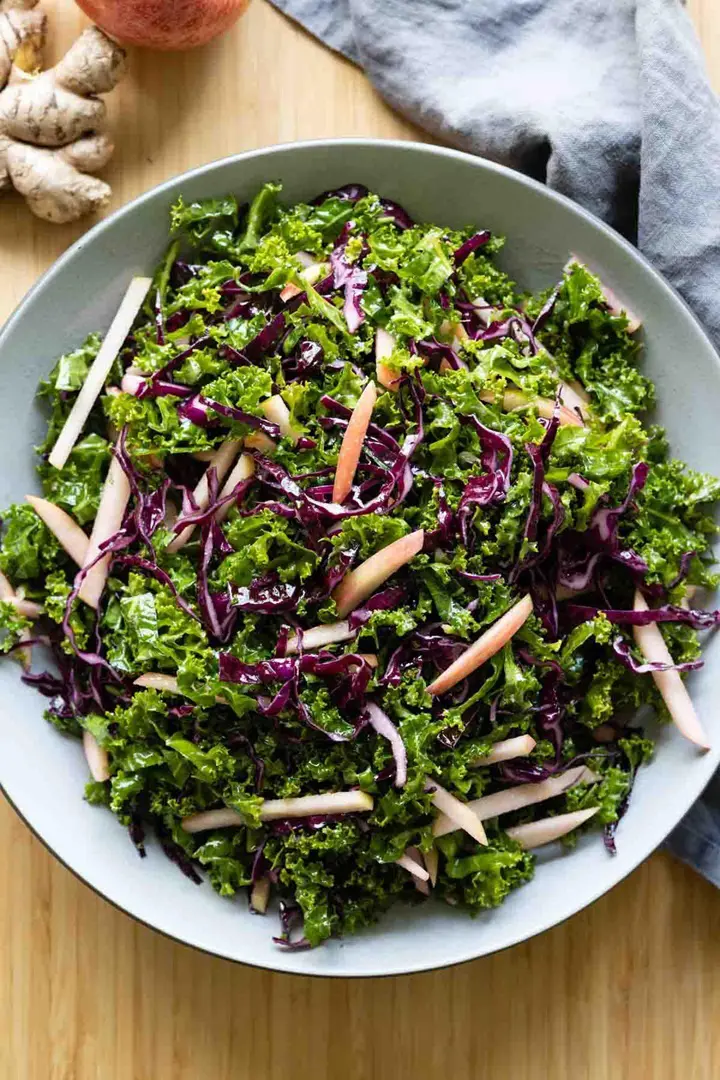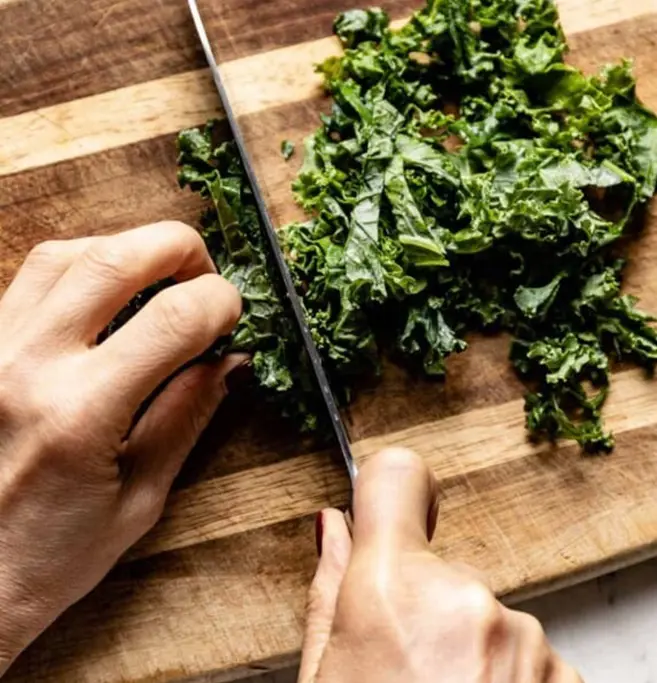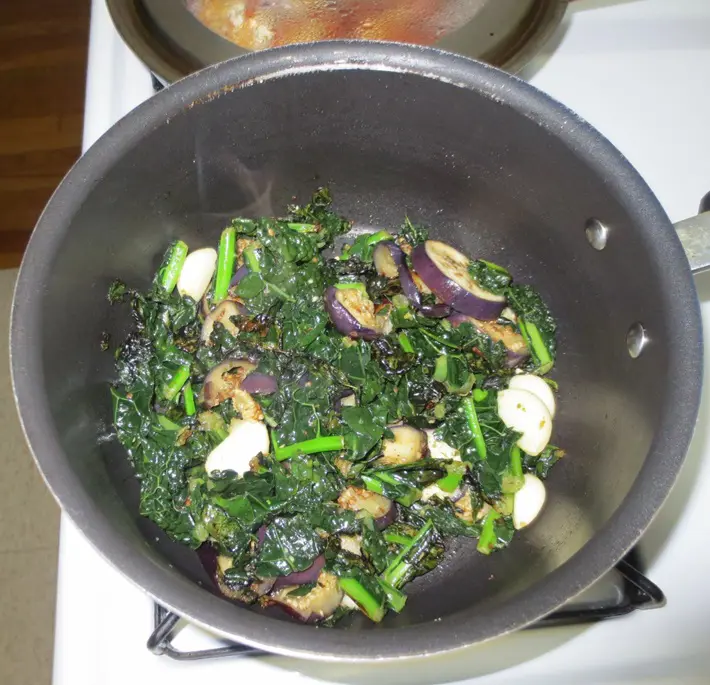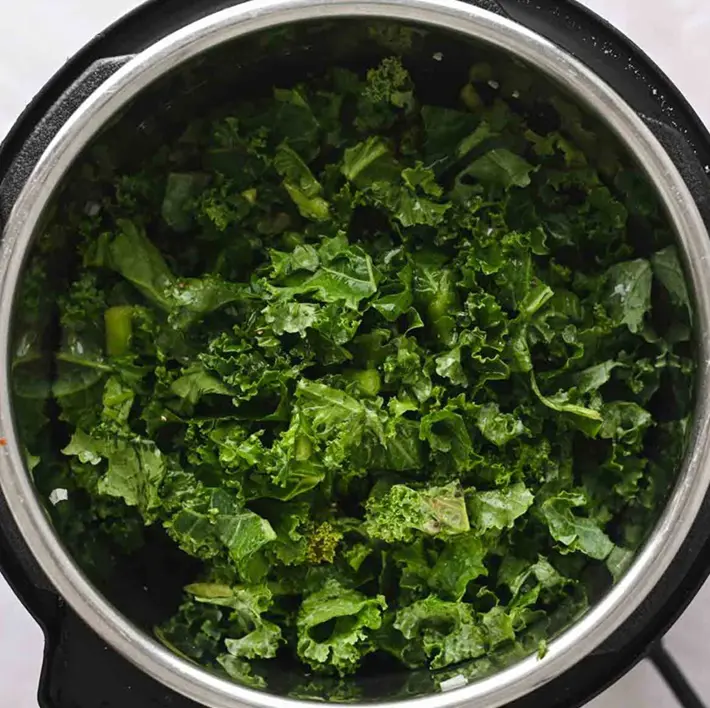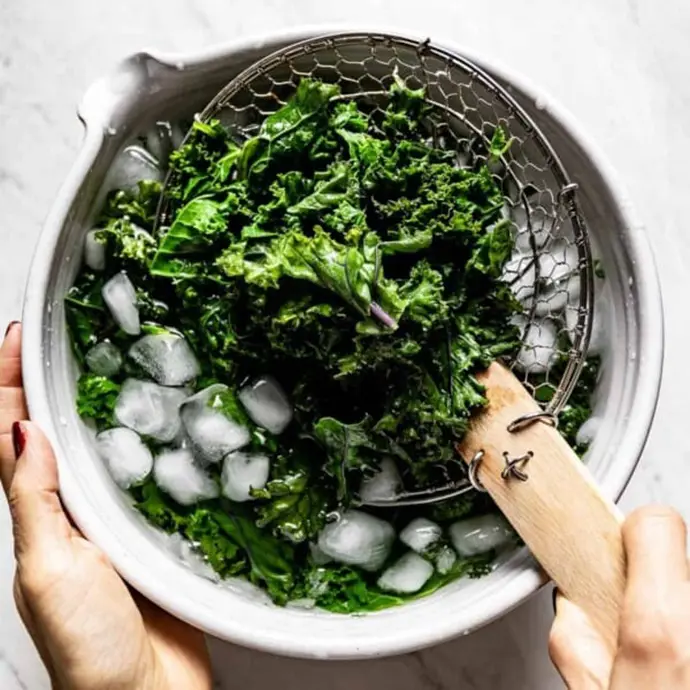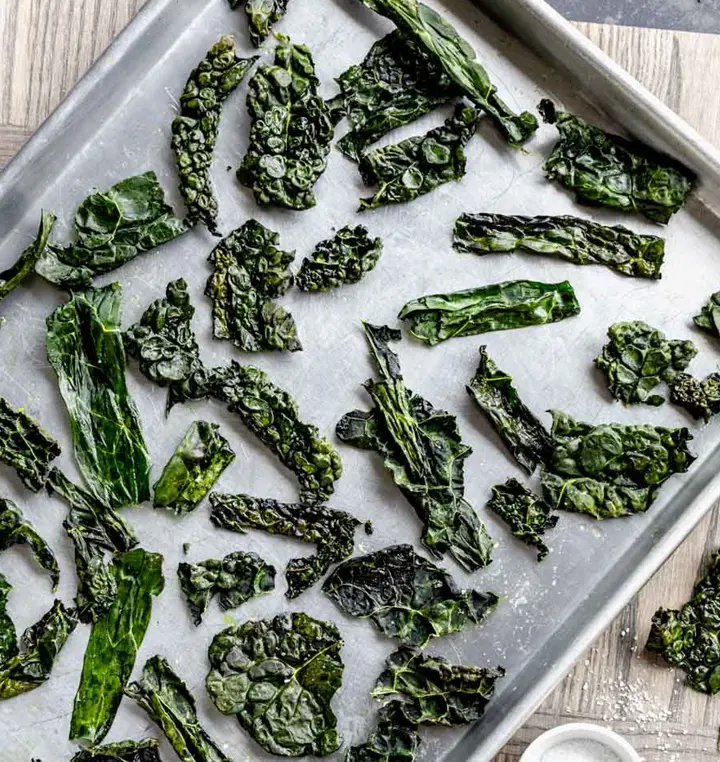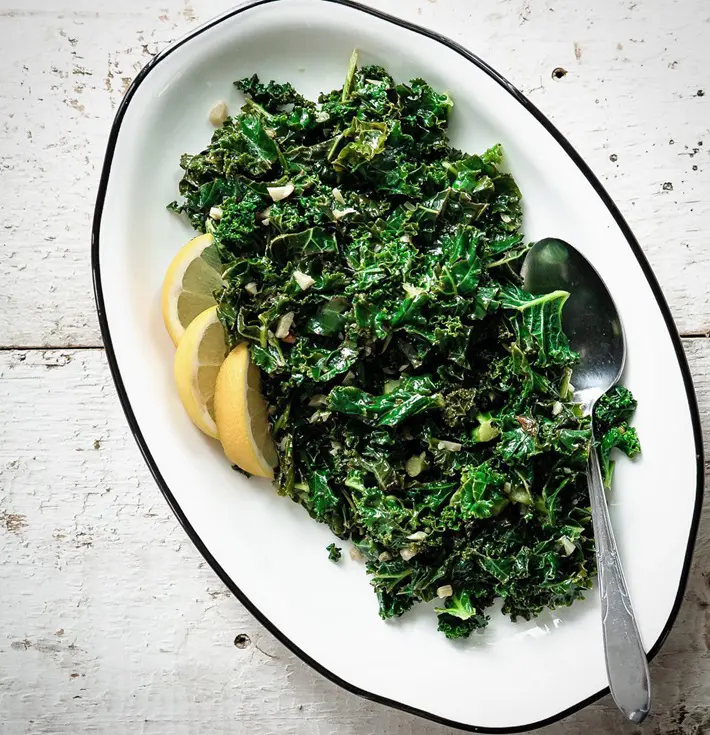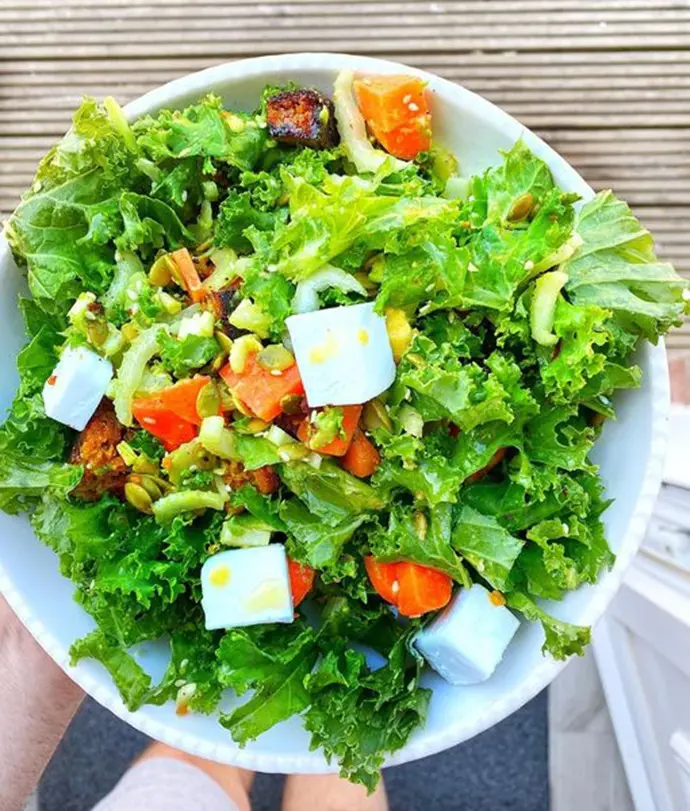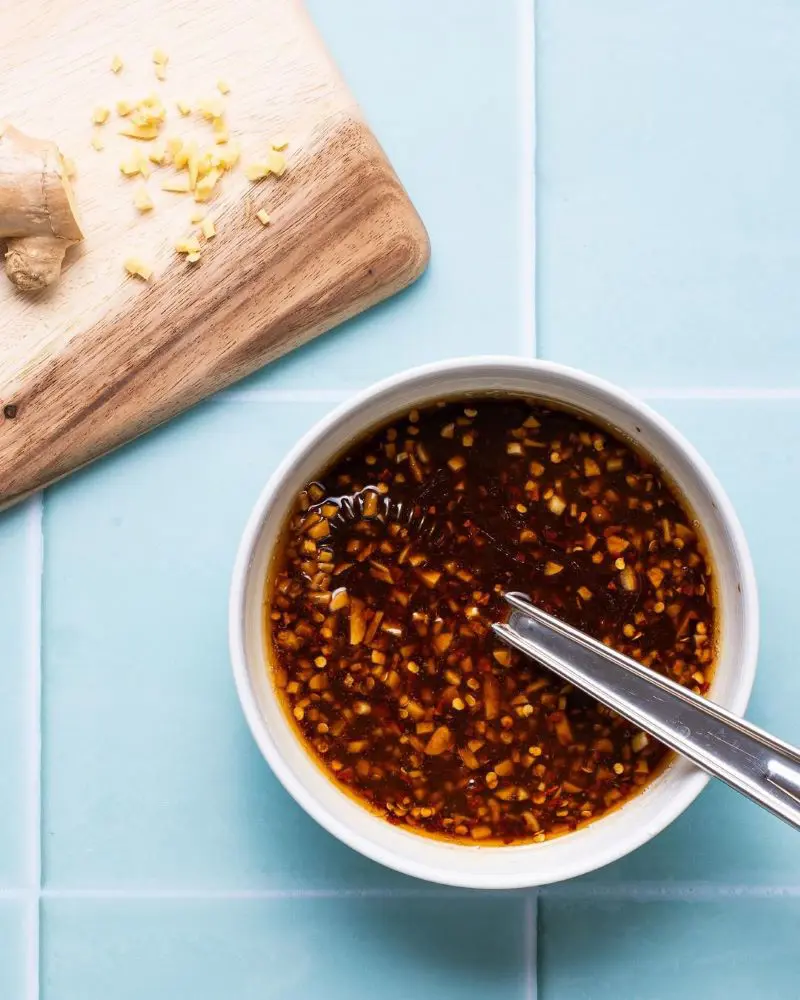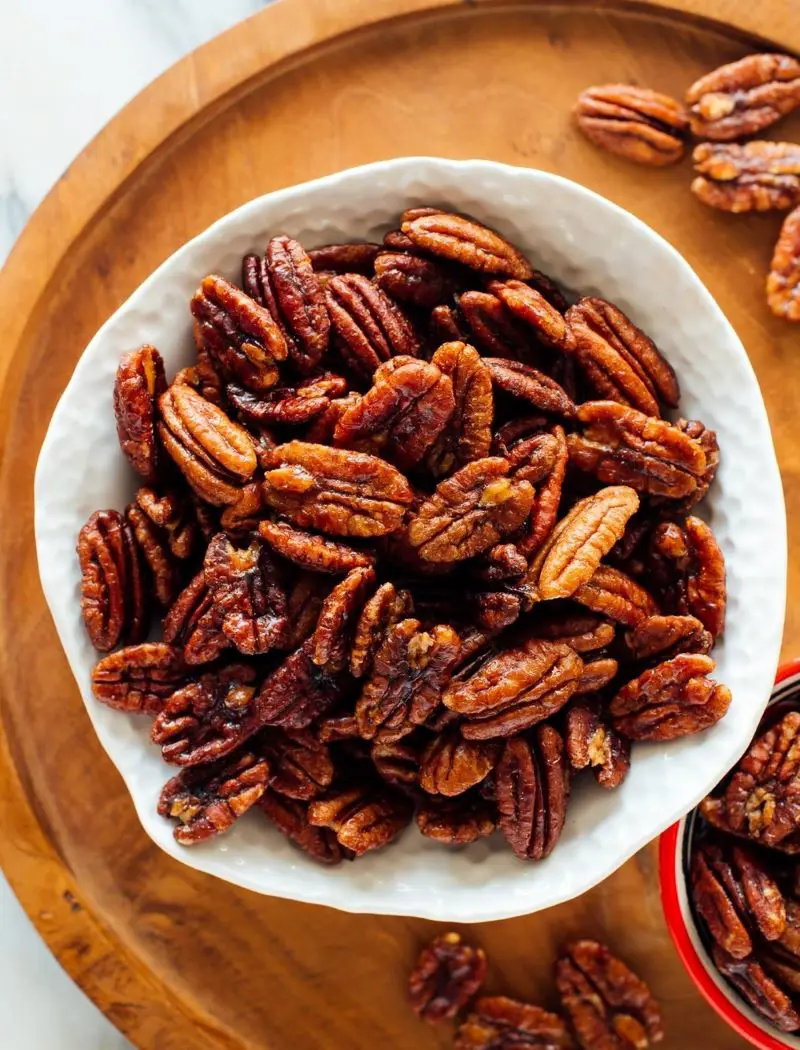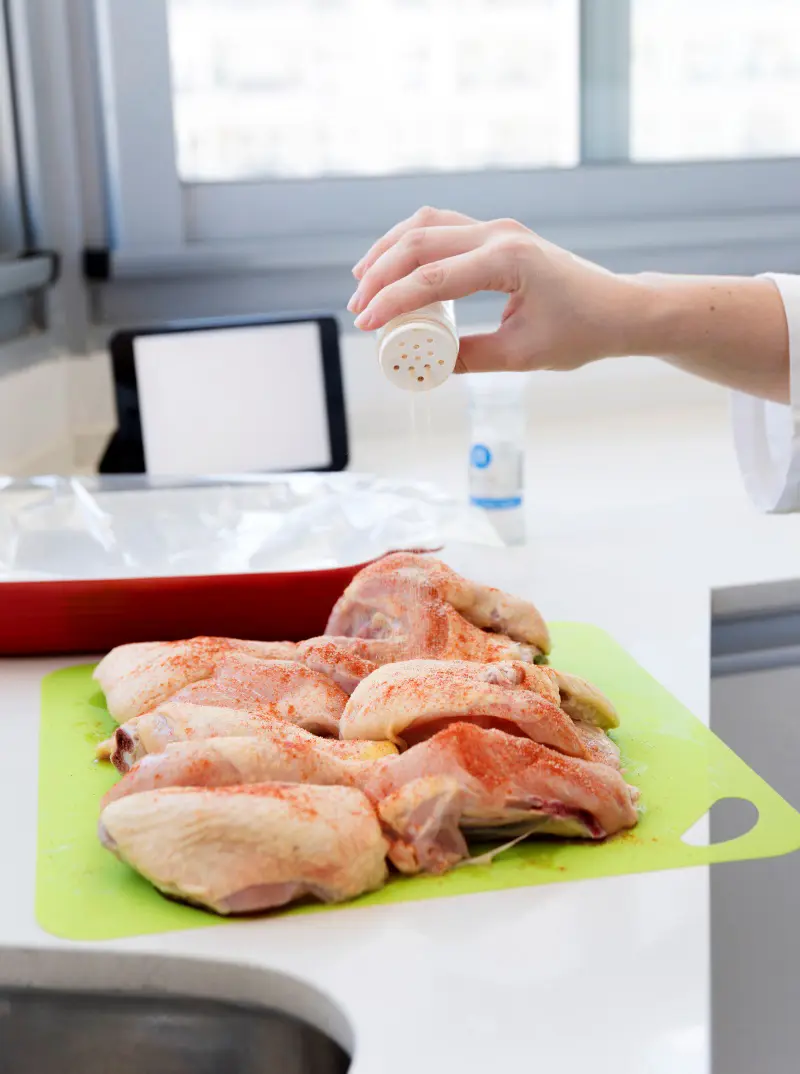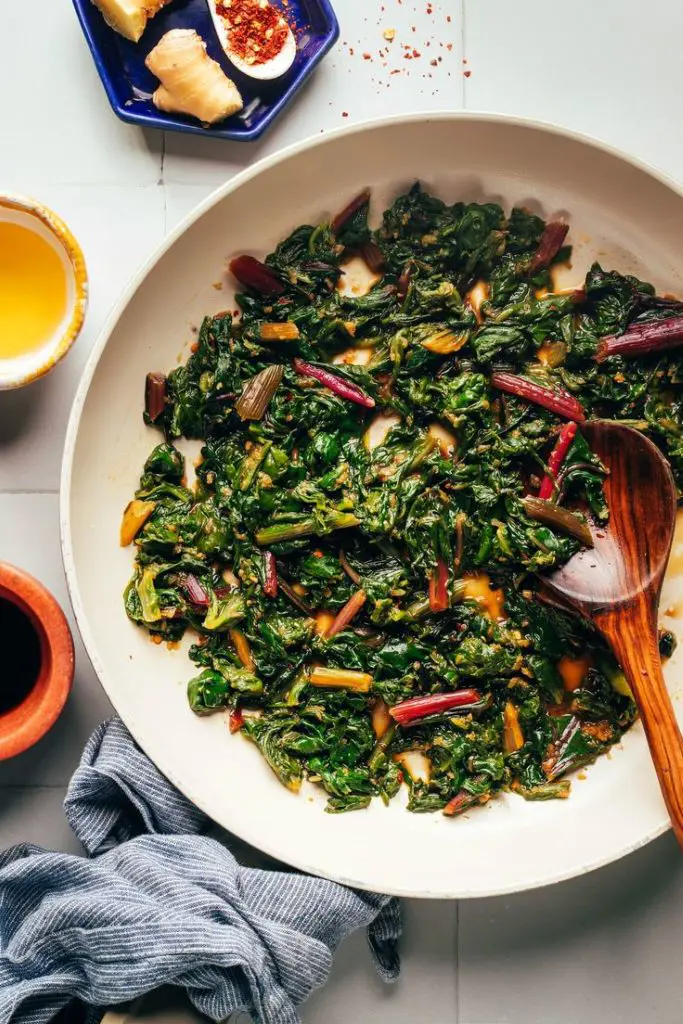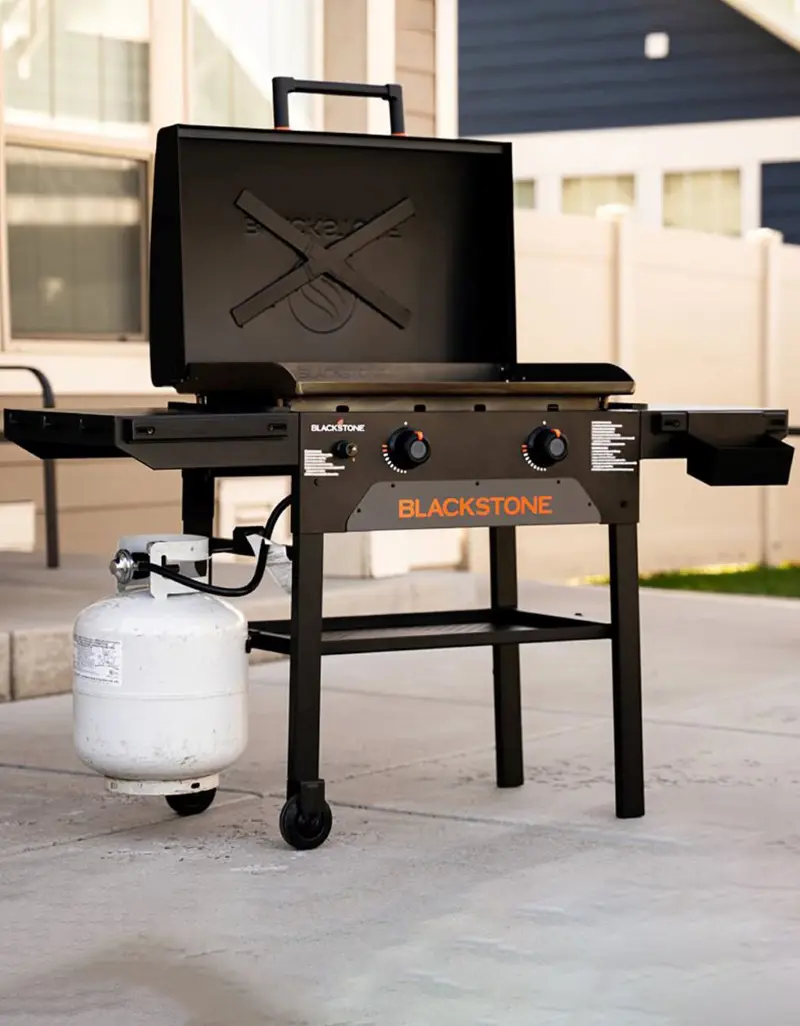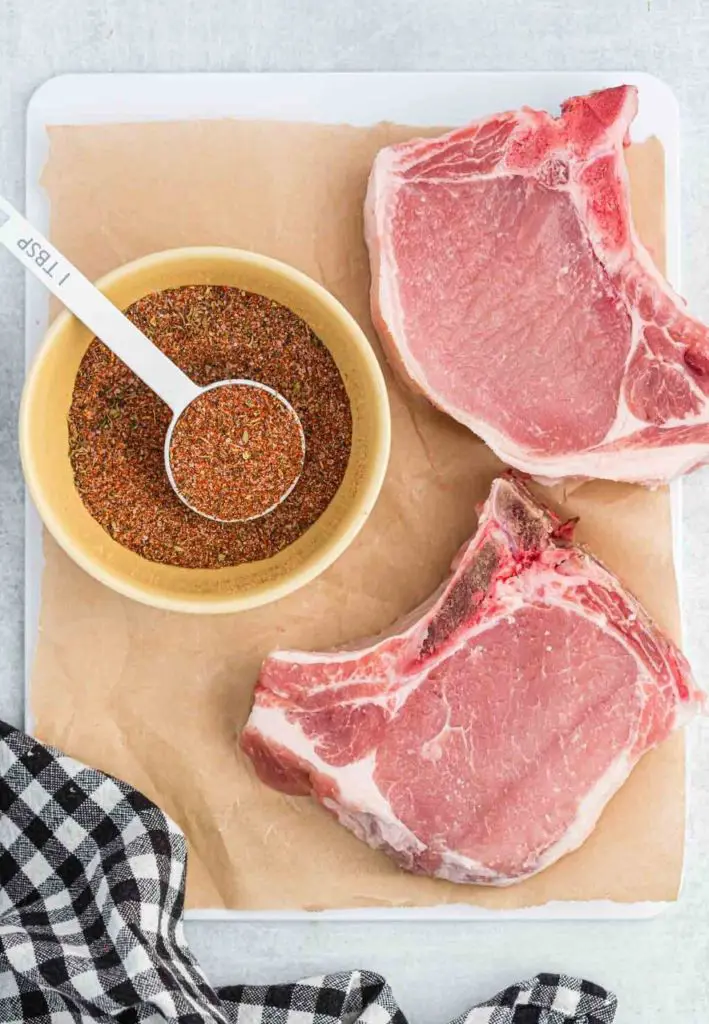Choosing the Right Kale To Cook
Selecting the best kale guarantees that your meals have the freshest, most nutritious greens. Fresh kale not only tastes better but also retains more vitamins and minerals. Before picking out your kale, consider:
- Leaf Color and Texture: Always choose kale with dark green colored, vibrant leaves that feel firm to the touch and crisp. Freshness is always accompanied by high nutrient content and therefore such leaves must be preferred over those that are turning yellow or wilting as they show degradation in their quality or nutrients.
- Size of the Leaves: It’s usually observed that smaller-sized leaves tend to have a much milder taste making them suitable for salads or any other raw cuisine. Larger leaves can be quite tough hence better suited for cooking methods like steaming or roasting.
- Stem Thickness: The tenderness of the leaves can be determined from the thickness of their stems. Thicker stemmed kinds often indicate older, tougher leaves while thinner ones denote young and tender ones.
- Organic vs. Conventional: When feasible always go for organic types since they are free from chemicals like harmful pesticides which are commonly found in the growing of non-organic plants. Overall organic kale is healthier because it possesses more flavor and nutrients.
